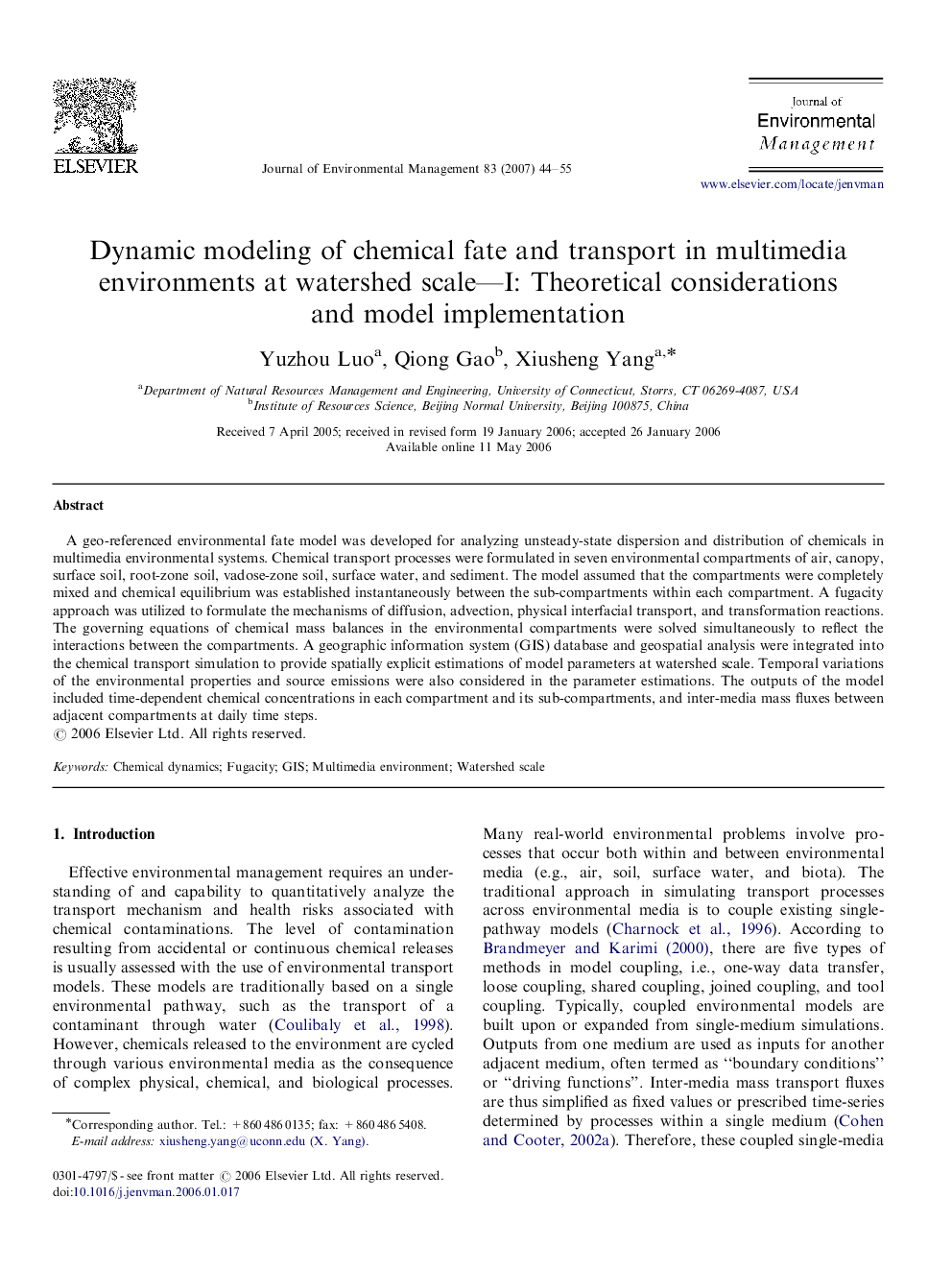| Article ID | Journal | Published Year | Pages | File Type |
|---|---|---|---|---|
| 1057874 | Journal of Environmental Management | 2007 | 12 Pages |
A geo-referenced environmental fate model was developed for analyzing unsteady-state dispersion and distribution of chemicals in multimedia environmental systems. Chemical transport processes were formulated in seven environmental compartments of air, canopy, surface soil, root-zone soil, vadose-zone soil, surface water, and sediment. The model assumed that the compartments were completely mixed and chemical equilibrium was established instantaneously between the sub-compartments within each compartment. A fugacity approach was utilized to formulate the mechanisms of diffusion, advection, physical interfacial transport, and transformation reactions. The governing equations of chemical mass balances in the environmental compartments were solved simultaneously to reflect the interactions between the compartments. A geographic information system (GIS) database and geospatial analysis were integrated into the chemical transport simulation to provide spatially explicit estimations of model parameters at watershed scale. Temporal variations of the environmental properties and source emissions were also considered in the parameter estimations. The outputs of the model included time-dependent chemical concentrations in each compartment and its sub-compartments, and inter-media mass fluxes between adjacent compartments at daily time steps.
